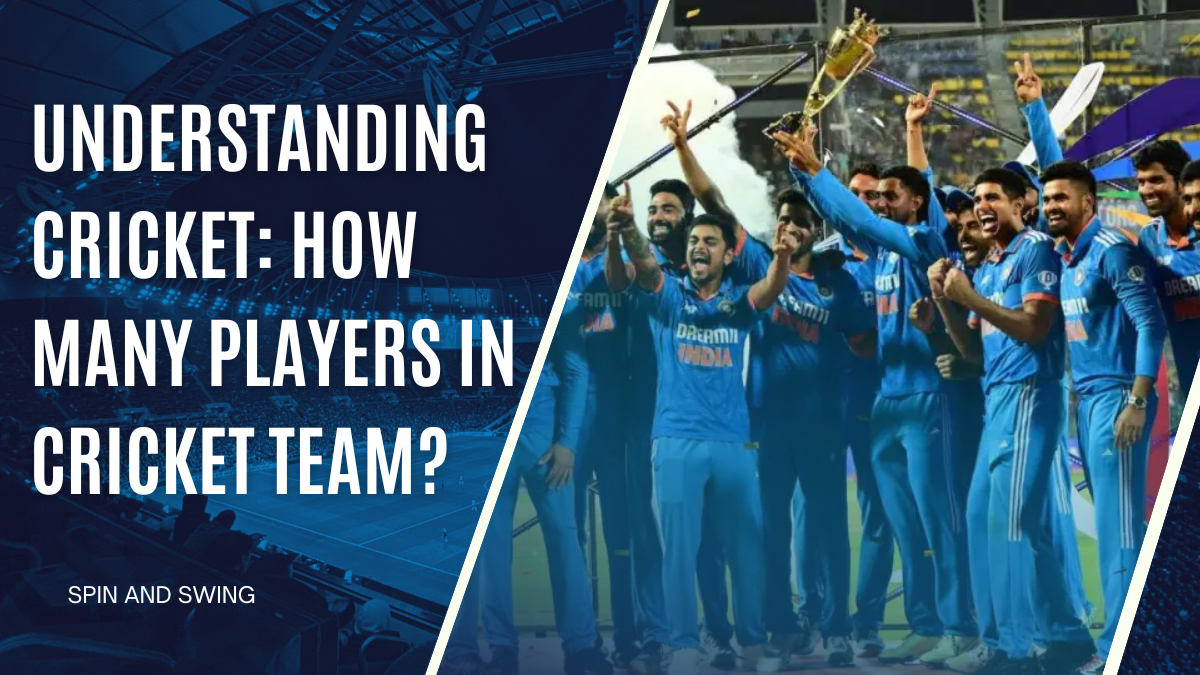Cricket, a game beloved by millions worldwide, is more than just a sport; it’s a shared passion that unites people. Whether you’re new to the game or a seasoned fan, you might have wondered: How many players in cricket team? This question is about more than just numbers—it reveals each player’s structure, strategies, and roles, making cricket a fascinating sport to watch and understand.
Let’s break this down step by step to clearly understand how many players are there in cricket team, including substitutes, and what makes this number crucial to the game.
How Many Players Are There in a Cricket Team?
A cricket team consists of 11 main players, including batters, bowlers, wicketkeepers, and all-rounders. These 11 players actively participate in the match and contribute to their team’s performance. However, cricket rules also allow additional substitute players who can step in under specific circumstances.
The number of players and their roles in a team are strictly defined by the International Cricket Council (ICC), ensuring fair play and proper conduct during the game.
Breaking Down the Players in Cricket Team
Each cricket team is made up of individuals with specific responsibilities designed to maximize team performance. A detailed look:

The Core 11 Players
The 11 players in a cricket team typically include:
- Specialist Batters: Focused on scoring runs, they are skilled at facing bowlers and building a strong score.
- Bowlers: Their main job is to dismiss batters and restrict runs. Bowlers can specialise in spin, pace, or medium pace.
- All-Rounders: These versatile players can bat and bowl effectively, offering flexibility to the team.
- Wicketkeeper: Positioned behind the stumps, they catch missed balls, stump batters, and guide the bowlers.
Substitutes: How Many Players in a Cricket Team Including Substitutes?
In addition to the 11 main players, teams have substitute players, which is crucial for backup. The most significant substitute rule is the Impact Player Rule, introduced in T20 leagues, allowing teams to replace one player mid-game. This has added a tactical layer to cricket, making substitutes more impactful.
Did you know? Under ICC regulations, a substitute fielder can step in if a player is injured or unwell but cannot bat or bowl unless allowed by specific tournament rules.
How Many Players Are There in One Cricket Team for Different Formats?
The structure of a cricket team stays the same in all formats—whether it’s Test cricket, One-Day Internationals (ODIs), or T20s. However, the importance of each player’s role can change depending on the format:
- Test Cricket: Requires more bowlers and batters due to its longer duration.
- ODIs: Demands a balance between aggressive and defensive players.
- T20s: Focuses on power-hitters and bowlers with tight economy rates for a fast-paced game.
While the cricket team has 11 players on the field at all times, strategies differ depending on the format.
How Many Players Are There in Each Cricket Team Across Leagues and Tournaments?

In addition to international cricket, domestic leagues like the IPL and Big Bash League have introduced new dynamics, particularly with the introduction of substitutes or “impact players.” This feature allows teams to swap one player during the match, making the bench strength as important as the playing 11.
For example:
- The Indian Premier League (IPL) permits teams to select an “Impact Player” who can replace any player during the game.
- The Hundred in England allows strategic substitutes, which can shift the game dramatically.
Such innovations highlight the evolving strategies around how many players in cricket team can influence the game.
Why Does the Number of Players Matter?
The answer to how many players are there in a cricket team lies in the balance of skills. Teams must carefully select players to ensure:
- A Balanced Playing XI: With specialists in batting, bowling, and fielding.
- Bench Strength: To address injuries or tactical changes during the match.
- Adaptability: Depending on pitch conditions, opponents, and game format.
Trends in Modern Cricket Teams
Modern cricket has seen some interesting changes in team composition:
- Increased Focus on All-Rounders: These players add depth to both batting and bowling, offering teams more options.
- Role of Substitutes: With innovations like the Impact Player Rule, the players in cricket team, including substitutes, have a bigger role than ever before.
- Specialized Training: Teams now emphasize skills like fielding, which has transformed into a match-winning aspect.
Conclusion
Cricket teams are carefully structured with 11 leading players and additional substitutes, ensuring they are ready for all situations during a match. While the core roles remain constant, introducing substitutes like Impact Players has changed how we think about how many players in cricket team contribute to a game.
From understanding the players in cricket team to appreciating their diverse roles, this knowledge deepens your enjoyment of the sport. So, the next time someone asks how many players are in a cricket team, you can confidently explain the numbers and the strategy and rules behind them. For the latest updates on cricket and IPL, visit our website, Spin and Swing—your ultimate destination for all things cricket, strategy, and live action!
FAQs
How many players are there in a cricket team?
A cricket team has 11 players on the field during a match.
How many players are there in a cricket team including substitutes?
A cricket team usually has 11 players and up to 4-7 substitutes, depending on the tournament rules.
How many players are there in one cricket team?
Each cricket team has 11 players actively playing in a match.
How many players are there in a cricket team, including reserves?
A cricket team generally has 11 players and a squad of 15-18, including reserves.
How many players in a cricket team can bat in Super Over?
In a Super Over, only 3 players from the cricket team can bat, as per the format’s rules.



